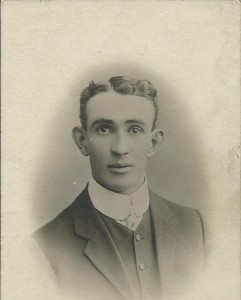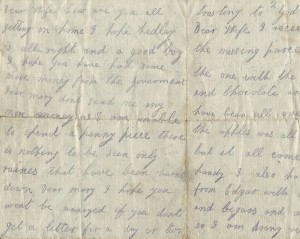22nd April 2015 Canberra, Australia
Anzac Day: The Diggers and Tommies of WW1

This week, I’m gearing up for the commemoration of the 100th anniversary of the Gallipoli landings. It’s my first Anzac Day here and I want to be ready; so I’ve visited the incredible Australian War Memorial here in Canberra (before the crowds arrive this weekend) and watched some moving documentaries on the History Channel.
And the first thing I did when I flew into Sydney on 8 April was to attend a BBC/British Council-hosted event on ‘The Legend of Anzac’. This was a great way to understand the relevance of Anzac to modern-day Australia, and the importance of Australian ‘Diggers’ – with their endurance, courage, ingenuity, good humour and ‘mateship’ – in the birth of a nation. You can listen to the debate here.
I’ve also been struck by how Australia uses stories, passed down from generation to generation, to keep the Anzac legend alive. We’ve done the same in my family. We had a ‘Tommy’ (the Brit version of ‘Diggers’) in the family: Harry Piper, who was my great-uncle on my Mum’s side of the family. Originally from the small village of South Molton, Devon, he moved to the Rhondda Valley in south Wales in search of work in his 20s, where he met and married my great-aunt, Mary. Records tell us that ten Anzac soldiers who fought in World War I were also born in South Molton, a reminder of the deep connections between our soldiers, fighting alongside each other for separate nations but a common cause.
Harry must have been a recalled reservist at the outbreak of the war, as by August 1914 he was on the Western Front with the 1st battalion of the Devonshire Regiment. On a postcard, he is described simply as:
- 7074 – Pte Harry Piper
- Height – about 5 ft 11
- Hair – dark brown
- Eyes – brown.
Nothing at all remarkable about that. And the photo of him also suggests a shy and slightly goofy character. Like 700,000 other ‘Tommies’, he was killed in action – aged 32, in Flanders Fields on 23 October 1914. His body was never recovered. Sadly, his and Mary’s only son, Hedley, died in 1917 aged just 4 years old. Mary never remarried or had other children, but she lived into her 80s and I can remember her (just) as a little old lady, known universally by her initials – MP: Mary Piper. A tribute of sorts to her late husband.

And we still have Harry’s letters. They were passed from Mary to my grandmother, who transcribed them all in an exercise book, then to my mother, then to me. When my son’s school class did a project on World War I just before we left the UK, we typed up one of Harry’s letters and read it to his class. In this way, we keep his story and voice alive, reminding us of the horrors of war and the importance of remembrance.
Harry seemed to have been a simple sort of bloke. His letters aren’t full of grand gestures or words. Just simple things.
He talks of his concern for his “dear wife and child” – and his need for socks “as my feet is getting very tender with marching so much”. How they are getting “a very trying time of it, day after day and night after night”. His request to Mary to send him some decent smokes, because “the tobacco here is like smoking hay”. His hope it will “soon be over so as to be home with you all again”.
He starts one of his letters with: “Just to let you know that I am still alive and kicking!” And ends all of them, always, “with best love to you all, from your affectionate husband, Harry xxxxxx”.
So when I stand at the Dawn Service at the War Memorial on Saturday, I’ll be thinking of the Diggers and the Tommies from each of our nations, who stood shoulder to shoulder through the dark days of World War I, and who stand together now in our memories, and speak to us across the generations. Let’s keep listening.
Lest we forget.
They live on in our thoughts and words, very moving blog. Thank you.
What a lovely,touching story. Brought tears to my eyes as I Remembered. dear MP and the cross that she bore. She was so gentle,kind, loving and caring. Thanks Menna’s for that touch of history.